| JOHANNES
IX de Leis
Italiano
Abbiamo contattato telefonicamente Sebastiano B. appartenente al ramo "di Laimburg" (2002). Lo ringraziamo per la disponibilità, in quanto ha fornito le seguenti informazioni che elenco in ordine progressivo numerico:
Spero che chiunque conosca qualche particolare lo fornisca, in modo da completare questo lavoro di ricerca con tutte le informazioni disponibili. |
||||||||||||||
|
Nota dell'autore: il titolo di Principe -Vescovo fu abolito nel 1803, pertanto Johannes IX conserva unicamente il titolo di Vescovo di Bressanone. JOHANNES IX di Leis: Vescovo
di Bressanone, Sudtirolo, * 18.6. 1821 in Innsbruck, † 24.4. 1884
in Bressanone. -
Lit.: J. Gelmi: Johannes IX. von Leis (1880-1884), in: Ders. Die Brixner Bischöfe in der Geschichte Tirols, Bozen 1984, 243-247; - J. Gelmi: Leis, Johannes von (1821-1884), in: E. Gatz, Die Bischöfe der deutschsprachigen Länder 1785/1803-1945, Berlin 1983, 141-142. Ekkart Sauser Ultima modifica: 26/09/1999
[Texto
en español - las imágenes son anteriores] Johannes IX de Leis +18.06.1821 en Innsbruck, -24.04.1884 en Bressanone-Brixen Nota de autor: el título de príncipe-obispo fue abolido en el 1803, por eso Johannes IX conserva unicamente el título de obispo de Bressanne-Brixen. Johannes de Leis de Laimburg nació en
Innsbruk hijo del tesorero de la aduana Anton von Leis y de Theresia
Rungaldier. Fue al instituto en Innsbruck y en Venecia. Sucesivamante
entró en el seminario en Bressanone y allí fue consagrado
sacerdote el 17 de Agosto de 1845. Se hizó monagillo en Schwaz
y en 1948 cooperador y beneficiado en Innsbruck. Durante los grandes
y difíciles conflictos sobre los poderes de estado e iglesia,
en el periodo del obispo Vinzen Gasser se empleó a menudo como
intermediario entre éstos y el regente del estado Eduard Graff
Taafe. Después de la muerte del obispo Vinzez Gasser el régimen
deseaba un sucesore más conciliante. Había algunos candidatos
favoritos en el clero y en el pueblo entre los obispos austriacos:
Simon Aichner, Johann Haller di Trent, por nombrar los más
importantes. El emperador nombró el 16 de junio de 1879 Johannes
von Leis como obispo de Bressanone. Después de esto fueron
enviadas muchas cartas a Roma de parte del Partido conservador del
Tirol, para invitar al Papa por lo menos a reconocer von Leis. El
organismo “Nuevas voces tiroleses-Neue Tiroler Stimmen“
lanzó incluso una campaña de amenazas reales hacia Leis.
En Tirolo Leis no era bienvenido. No se podía olvidar, que
había mediado muy a menudo entre su predecesor el obispo Gasser
y el régimen, No obstante todo eso obtiene la nomina papal
el 26 de noviembre de 1879. El 4 de abril de 1880 Leis fue consagrado
obispo por el arzobispo de Salisburgo Eder en la catedral de Bressanone
de la cual fue obispo solo por 4 años porque murió improvisamente
de un infarto. Josef Gelmin subraya la importancia de Leis, que fue
obispo de Bressanone, con las palabras: [Texte
en français - les images sont au-dessus] JOHANNES IX di Leis +18.06.1821
in Innsbruck, -24.04.1884 in Bressanone-Brixen Johannes de Leis de Laimburg naquit à
Innsbruck, fils du percépteur des douanes Anton von Leis
et de Theresia Rungaldier. Il fréquenta le gymnase à
Innsbruck et à Venise. Successivement il entra au séminaire
à Bressanone et là, fut consacré prêtre
le 27 août 1845. Il devint aide-prêtre à Schwaz
et en 1848 coopérateur et bénéficiaire à
Innsbruck. En 1860 il rejoignit Brigenz comme curé, mais il
retourna en 1862 à Innsbruck. Durant les grands et importants
conflits sur les pouvoirs d’état et d’église,
pendant la période de l’évêque Vinzenz Gasser,
il s’employa souvent à être intermédiaire
entre ceux-ci et le régent d’Etat Edouard Graf Taaffe.
Après la mort de l’évêque Vinzenz Gasser
le régime désirait un successeur plus conciliant. Il
y avait certain candidat préféré dans le clergé
et dans le peuple parmi les évêques autrichiens : Simon
Aichner, Johann Haller de Trient, pour nommer les plus importants.
L’empereur nomma le 16 juin 1879 Johannes von Leis évêque
de Bressanone. A la suite de ceci furent envoyées de nombreuses
lettres à Rome de la part du Parti Conservateur du Tyrol, pour
inviter au moins le pape a reconnaître von Leis. L’organisme
“nouvelles voies tyroliennes - Neue Tiroler Stimmen” lança
même une campagne de menaces contre von Leis. En Tyrol, Leis
n’était pas le bienvenu. Il ne pouvait pas oublier, que
celui-ci avait été très souvent médiateur
entre son prédécesseur l’évêque Gasser
et le régime. Malgré tout ceci il obtient la nomination
papale le 26 novembre 1879. Le 4 avril 1880 Leis fut consacré
évêque de l’archevêque de Salzbourg Eder
dans le dôme de Bressanone duquel il fut évêque
seulement pour 4 années, car il mourut d’infarctus de
façon imprévue. Josef Gelmi souligna l’importance
de Leis, qui fut évêque de Bressanone, avec les mots
: [Text
auf Deutsch - die Bilder sind oben] Band XVI (1999) Spalten 825-826 Autor: Ekkart Sauser JOHANNES IX. von Leiß: Fürstbischof von Brixen/Sütirol, * 18.6. 1821 in Innsbruck, † 24.4. 1884 in Brixen. - Johannes von Leiß zu Laimburg wurde in Innsbruck als Sohn des Zolleinnehmers Anton von Leiß und der Theresia Rungaldier geboren. Das Gymnasium absolvierte er in Innsbruck und Venedig. Dann trat er in das Priesterseminar zu Brixen ein und wurde dort am 27. August 1845 zum Priester geweiht. Dann wurde er Hilfspriester in Schwaz und 1848 Kooperator und Benefiziat in Innsbruck. 1860 kam er als Stadtpfarrer nach Bregenz, kehrte aber 1862 nach Innsbruck zurück. Während der großen und anhaltenden kirchenpolitischen Konflikte unter Fürstbischof Vinzenz Gasser trat er oft als Vermittler gegenüber dem Statthalter Eduard Graf Taaffe auf. - Nach dem Tode von Fürstbischof Vinzenz Gasser wünschte die Regierung einen konzilianten Nachfolger. Es gab im Klerus und Volk wie unter den österreichischen Bischöfen verschiedene Lieblingskandidaten: Simon Aichner, Johann Haller von Trient, um nur die wichtigsten zu nennen. Der Kaiser jedoch nominierte am 16. Juni 1879 Johannes von Leiß zum Fürstbischof von Brixen. Daraufhin wurden viele Briefe von der konservativen Partei Tirols nach Rom gesandt, um die päpstliche Ernennung von Leiß zumindest zu verzögern. Das Organ »Neue Tiroler Stimmen« ließ sogar eine regelrechte Hetzkampagne gegen L. los. - In Tirol war L. zunächst nicht beliebt. Man konnte hier nicht vergessen, daß er zwischen Fürstbischof Gasser, seinem Vorgänger, und der Regierung öfters vermittelt hatte. Trotzdem: Am 26. November 1879 traf die päpstliche Ernennung ein. Am 4. April 1880 wurde L. von Salzburger Erzbischof Eder im Dom zu Brixen zum Bischof geweiht. - Josef Gelmi umreißt die Bedeutsamkeit von L., der ja nur 4 Jahre Fürstbischof von Brixen gewesen war, mit den Worten: »Mit seiner Liebenswürdigkeit und Ausgeglichenheit hat Leiß allmählich die bei Klerus und Volk gegen ihn herrschenden Vorurteile abgebaut und Sympathien gewonnen. Von der Politik seines Vorgängers konnte er sich freilich nicht ganz distanzieren, und so hat er bei seinem Eintritt in den Tiroler Landtag zusammen mit den anderen Bischöfen des Kronlandes formell Verwahrung gegen die Verletzung der Glaubenseinheit Tirols eingelegt. Dies war jedoch mehr eine Klage über das Ende der konfessionellen Geschlossenheit als ein Kampfmanifest. Leiß war ein seelsorglich eifriger Bischof, der jegliche Härte verschmähte.« (Die Brixner Bischöfe in der Geschichte Tirols, 1984, S. 247). L. starb ganz plötzlich an einem Herzversagen. Lit.: J. Gelmi: Johannes IX. von Leiß (1880-1884), in: Ders. Die Brixner Bischöfe in der Geschichte Tirols, Bozen 1984, 243-247; - J. Gelmi: Leiß, Johannes von (1821-1884), in: E. Gatz, Die Bischöfe der deutschsprachigen Länder 1785/1803-1945, Berlin 1983, 141-142. Ekkart Sauser
[Text
in English - the images are above]
Johannes IX di Leis |
||||||||||||||

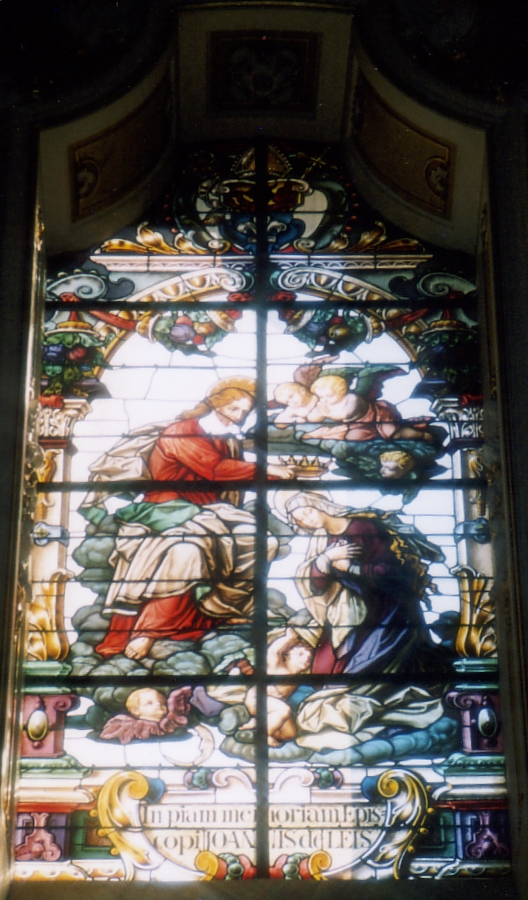
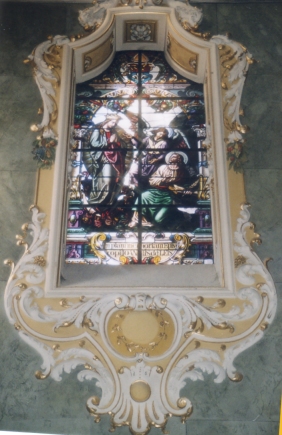
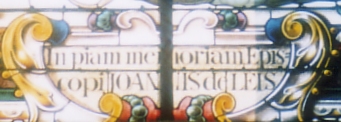
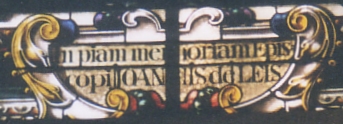
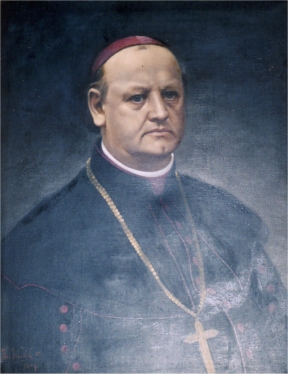 Johannes
Leis di Laimburg nacque a Innsbruck figlio dell'esattore
di dogana Anton von Leis e di Theresia Rungaldier. Frequentò
il Ginnasio a Innsbruck e a Venezia. Successivamente entrò
in seminario a Bressanone e lì fu consacrato prete il 27
agosto 1845. Divenne aiuto-prete a Schwaz e nel 1848 cooperatore
e beneficiato a Innsbruck. 1860 giunse come parroco a Bregenz, ma
ritornò nel 1862 a Innsbruck. Durante i grandi e complessi
conflitti sui poteri di stato e chiesa nel periodo del vescovo Vinzenz
Gasser si adoperò spesso come intermediario tra questi
Johannes
Leis di Laimburg nacque a Innsbruck figlio dell'esattore
di dogana Anton von Leis e di Theresia Rungaldier. Frequentò
il Ginnasio a Innsbruck e a Venezia. Successivamente entrò
in seminario a Bressanone e lì fu consacrato prete il 27
agosto 1845. Divenne aiuto-prete a Schwaz e nel 1848 cooperatore
e beneficiato a Innsbruck. 1860 giunse come parroco a Bregenz, ma
ritornò nel 1862 a Innsbruck. Durante i grandi e complessi
conflitti sui poteri di stato e chiesa nel periodo del vescovo Vinzenz
Gasser si adoperò spesso come intermediario tra questi 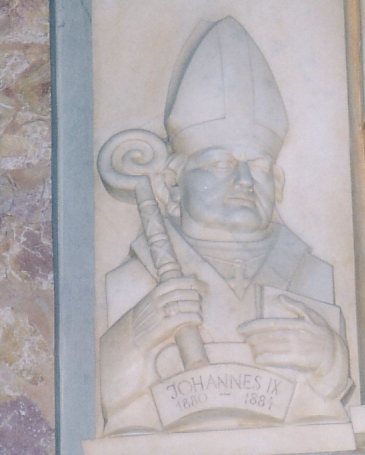 ed
il reggente di Stato Eduard Graf
Taaffe. - Dopo la morte del vescovo Vinzenz Gasser il regime desiderava
un successore più conciliante. C'erano alcuni candidati preferiti
nel clero e nel popolo tra i vescovi austriaci: Simon Aichner, Johann
Haller di Trient, per nominare i più importanti. L'imperatore
nominò il 16 giugno 1879 Johannes von Leis come vescovo di
Bressanone. In seguito a ciò furono inviate molte lettere
a Roma da parte del Partito Conservatore del Tirolo, per invitare
il Papa almeno a riconoscere il von Leis. L'organismo »Nuove voci
tirolesi« (»Neue Tiroler Stimmen«) lanciò perfino una campagna
di minacce vera e propria nei confronti di von Leis - In Tirolo
Leis non era benvoluto. Non si poteva dimenticare, che egli aveva
media
ed
il reggente di Stato Eduard Graf
Taaffe. - Dopo la morte del vescovo Vinzenz Gasser il regime desiderava
un successore più conciliante. C'erano alcuni candidati preferiti
nel clero e nel popolo tra i vescovi austriaci: Simon Aichner, Johann
Haller di Trient, per nominare i più importanti. L'imperatore
nominò il 16 giugno 1879 Johannes von Leis come vescovo di
Bressanone. In seguito a ciò furono inviate molte lettere
a Roma da parte del Partito Conservatore del Tirolo, per invitare
il Papa almeno a riconoscere il von Leis. L'organismo »Nuove voci
tirolesi« (»Neue Tiroler Stimmen«) lanciò perfino una campagna
di minacce vera e propria nei confronti di von Leis - In Tirolo
Leis non era benvoluto. Non si poteva dimenticare, che egli aveva
media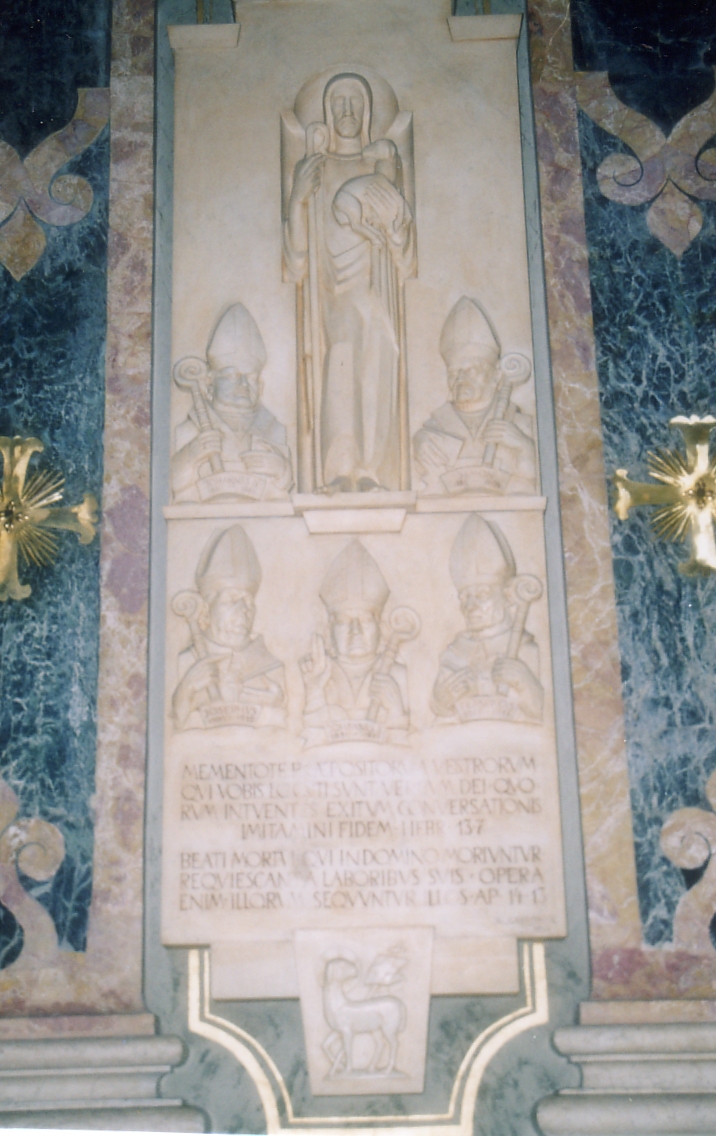 to
molto spesso tra il suo predecessore il vescovo Gasser ed il regime.
Nonostante tutto ciò ottenne la nomina papale il 26 novembre
1879. Il 4 aprile 1880 Leis fu consacrato vescovo dall'arcivescovo
di Salisburgo Eder nel duomo di Bressanone. - Josef Gelmi sottolinea
l'importanza di Leis, che fu
vescovo di Bressanone solo per la durata di 4 anni, con le parole:
»Con la sua gentilezza ed il suo equilibrio Leis conquistò
gradualmente la simpatia del clero e della popolazione ed abbattè
i pregiudizi nei suoi confronti. Naturalmente non si potè
distanziare di molto dalla politica del suo predecessore, e così
nella sua entrata nel parlamento del Tirolo insieme con gli altri
vescovi della corona depose una formale dichiarazione, in cui sostenne
che avrebbe considerato la ferita inferta al credo del Tirolo. Questa
era in realtà più una lamentela sulla fine delle ristrettezze
nella confessione, piuttosto che un manifesto con toni guerreschi.
Leis fu un vescovo che si curò delle sue anime in modo quasi
ansioso, e che disprezzava qualsiasi cattiveria.« (Die Brixner Bischöfe
in der Geschichte Tirols, 1984, S. 247). Leis
morì improvvisamente per un infarto.
to
molto spesso tra il suo predecessore il vescovo Gasser ed il regime.
Nonostante tutto ciò ottenne la nomina papale il 26 novembre
1879. Il 4 aprile 1880 Leis fu consacrato vescovo dall'arcivescovo
di Salisburgo Eder nel duomo di Bressanone. - Josef Gelmi sottolinea
l'importanza di Leis, che fu
vescovo di Bressanone solo per la durata di 4 anni, con le parole:
»Con la sua gentilezza ed il suo equilibrio Leis conquistò
gradualmente la simpatia del clero e della popolazione ed abbattè
i pregiudizi nei suoi confronti. Naturalmente non si potè
distanziare di molto dalla politica del suo predecessore, e così
nella sua entrata nel parlamento del Tirolo insieme con gli altri
vescovi della corona depose una formale dichiarazione, in cui sostenne
che avrebbe considerato la ferita inferta al credo del Tirolo. Questa
era in realtà più una lamentela sulla fine delle ristrettezze
nella confessione, piuttosto che un manifesto con toni guerreschi.
Leis fu un vescovo che si curò delle sue anime in modo quasi
ansioso, e che disprezzava qualsiasi cattiveria.« (Die Brixner Bischöfe
in der Geschichte Tirols, 1984, S. 247). Leis
morì improvvisamente per un infarto.

